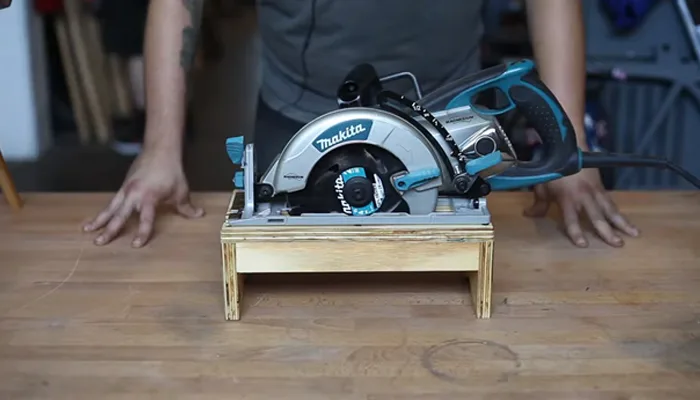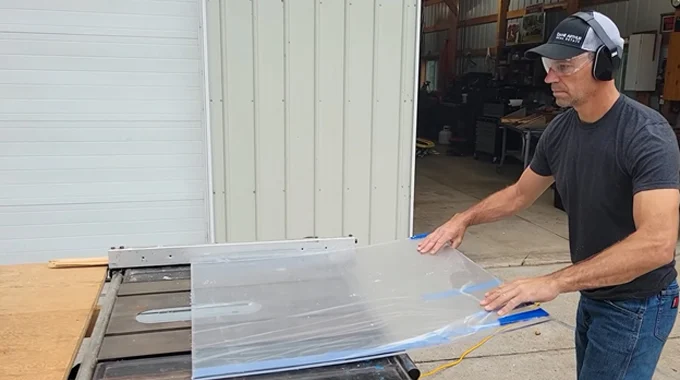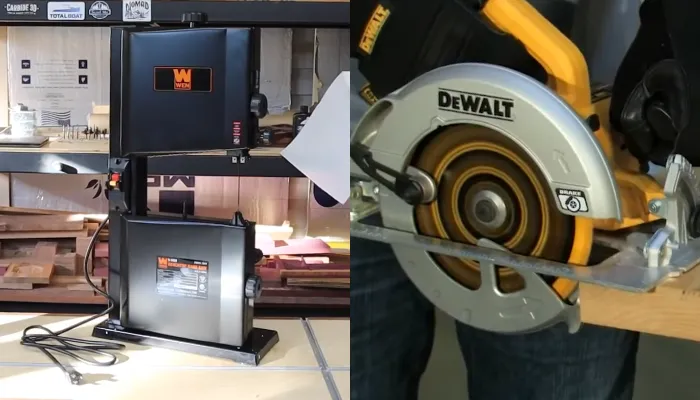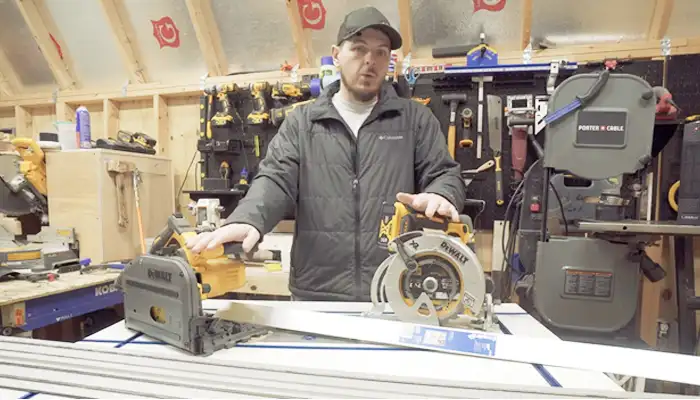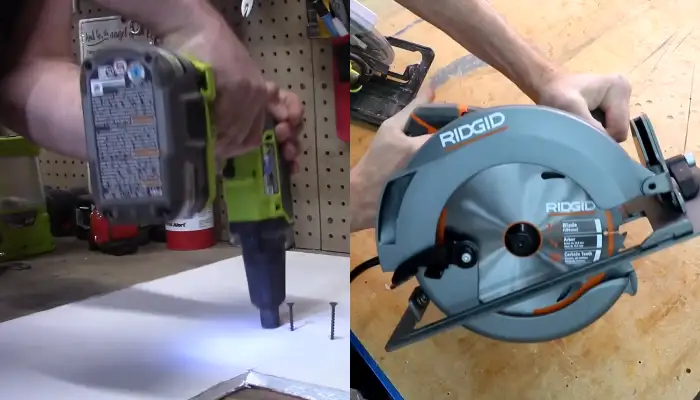How to Store Circular Saw: 8 Different Methods
After you’ve worked on your woodworking project using a circular saw, it is vital to store it properly to ensure it remains in excellent condition. Proper storage will keep your saw clean, protect its edges, and prevent damage from moisture and dust.
I researched about properly storing circular saws, and I found some effective methods that you can use to keep your saw safe and secure. One effective way to store your circular saw is by using a dedicated storage case.
A storage case provides protection, organization, and portability for your circular saw, blades, and accessories. Hanging your circular saw on a wall is another space-saving and easily accessible option.
Here, I will share with you some of the best methods for storing circular saws that I have found in my research. Additionally, I will also explain to you the steps to make an easy DIY circular saw storage holder for your convenience.
How to Store Circular Saw: Try These Methods
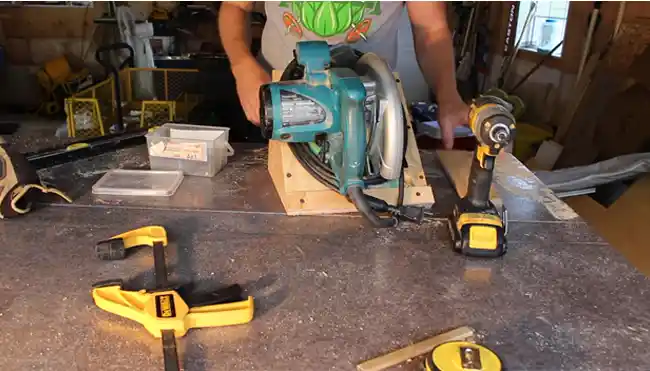
Regarding storing your circular saw, there are several methods you can consider.
- Using a storage case
- Hanging the circular saw
- Storing in a toolbox or cabinet
- Using pegboard hooks
- Under-workbench hook
- Slot in a woodworking bench
- Saw storage caddy
- DIY circular saw storage rack
Now, check out each of the few different options for storing a circular saw, and choose the one that best fits your workspace to keep your saw organized.
1. Using a Storage Case
You can store your circular saw in a storage case. Simply place it in the designated compartment and ensure it’s clean and dry. Before placing the saw in the case, wipe off any dust or debris using a clean cloth.
Ideally, you should keep the case clean as well, so periodically check for any dirt or grime and clean it with a mild detergent if necessary. Make sure the saw is properly positioned in the compartment, with the blade facing away from any other tools or accessories. This will help prevent any accidental damage.
Once the saw is securely in place, close the case and ensure that it’s latched properly. This will protect your circular saw from dust, moisture, and any potential impacts during transportation or storage.
2. Hanging the Circular Saw
Hanging your circular saw on a wall can save you space and ensure that it is easily accessible. To hang your circular saw for storage, consider using a wall-mounted hook or hanger. Start by choosing a suitable wall space and measuring your saw’s dimensions. This will help you determine where to install the hooks or hangers.
After that, install the hooks or hangers securely on the wall. Make sure they can support the weight of the saw. Once the hooks or hangers are in place, hang the saw by placing its handle or base onto them.
To prevent tangling or damage, secure the power cord neatly using cable ties or hooks. This will help keep everything organized. Additionally, consider using a safety lock or latch to prevent accidental falls. This will add an extra level of security.
3. Storing in a Toolbox or Cabinet
To store your circular saw in a toolbox or cabinet, gather a spacious container with secure locks or latches. This will ensure that your saw and its accessories are protected.
Before storing, make sure to clean and prepare the interior of the toolbox or cabinet to prevent dust and debris from accumulating. You can also use dividers, foam inserts, or tool trays to keep everything organized and in its place.
Before placing the circular saw inside the toolbox or cabinet, wrap it in a cloth or foam to prevent scratches and damage. Additionally, it’s a good idea to arrange your accessories and circular saw blades in labeled containers for easy access.
Once everything is securely stored, find a suitable location to keep the toolbox or cabinet, ensuring that it’s closed tightly.
4. Using Pegboard Hooks
In my research, I also discovered that some users choose to hang their circular saws on pegboard hooks. When using pegboard hooks to store your circular saw, you can maximize space efficiency while keeping it easily accessible.
Start by selecting the appropriate size and weight capacity of hooks for your saw. Measure the width of the saw’s handle and choose hooks that can securely hold it without slipping or falling off.
Attach the hooks to the pegboard, ensuring they’re properly aligned and firmly secured. Hang the circular saw by inserting the handle onto the hooks and letting it rest. Ensure the saw is balanced and not leaning to one side, as this could cause it to fall.
5. Under-Workbench Hook
You can also consider hanging the circular saw under your workbench using a hook so it’s easily accessible and out of the way, maximizing workspace efficiency. This method is especially useful if you have limited space in your workshop or garage.
To hang the circular saw, you’ll need a sturdy hook that can support its weight. Attach the hook to the underside of your workbench, ensuring it’s securely fastened. Hang the circular saw by its handle from the hook, ensuring it’s well-balanced and won’t swing or fall.
This way, your circular saw will be conveniently stored, protected from damage, and readily available whenever you need it for your projects.
6. Slot in Woodworking Bench
Store your circular saw in a slot you’ve cut into your woodworking bench for easy access and space-saving storage. This method is particularly beneficial if you have a dedicated workbench for your woodworking projects.
By cutting a slot in the bench, you create a secure and convenient storage space for your circular saw. To create the slot, measure the width and depth of your circular saw and use a jigsaw or router to cut out a corresponding slot on your benchtop. Make sure the slot is wide enough to accommodate the saw’s blade and body.
Once the slot is cut, simply slide your circular saw into the slot, ensuring it’s snug and secure. This method not only keeps your saw within arm’s reach but also helps declutter your workspace, allowing you to focus on your woodworking tasks efficiently.
7. Saw Storage Caddy
A saw storage caddy is another great option for keeping your circular saw organized and easily accessible. These caddies are specifically designed to hold your saw securely and protect it from damage.
They typically have notches for the blade guard, providing a safe and secure place to store your saw. Additionally, they often feature a cleat for support, ensuring that your saw remains stable and doesn’t topple over.
Many saw storage caddies also include a cord management system, allowing you to store the saw’s cord neatly. With a saw storage caddy, you can keep your circular saw in a designated spot, making it easier to find and use whenever you need it.
8. DIY Circular Saw Storage Rack
Another simple way to store your circular saw is by creating a DIY circular saw storage rack. By building your own storage rack, you can customize it to fit your specific needs and preferences.
Things to Avoid When Storing Circular Saw
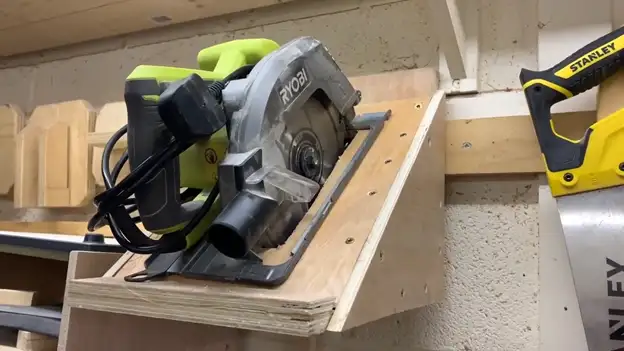
When storing your circular saw, there are a few things you should avoid to ensure its longevity and safety.
1. Moisture and Humidity
To avoid damage to your circular saw, store it in a dry and well-ventilated area, free from moisture and humidity. Moisture and humidity can wreak havoc on your saw, leading to rust, corrosion, and potential malfunctions.
When exposed to these elements, the metal components of your saw can deteriorate, affecting its performance and lifespan.
To prevent this, find a storage space that’s dry and well-ventilated. Avoid storing your saw in basements, garages with high humidity levels, or areas prone to water leaks.
2. Extreme Temperatures
To protect your professional-grade circular saw from damage, avoid exposing it to extreme temperatures that can negatively impact its performance and longevity.
High heat can cause plastic components to warp or melt, affecting the saw’s accuracy and stability. On the other hand, low temperatures can make materials brittle and prone to cracking, leading to potential safety hazards.
When storing your circular saw, it’s important to choose a location with a moderate and stable temperature. Avoid areas such as garages or sheds that can experience extreme heat or cold. Instead, consider storing your saw in a climate-controlled environment, such as a workshop or tool cabinet.
3. Flammable Materials
Store your circular saw away from flammable materials, chemicals, or liquids to ensure safety and prevent potential accidents or fires.
When storing your circular saw, it’s important to keep it in a separate area from any substances that are prone to catching fire easily. Flammable materials such as gasoline, paint thinner, and solvents should be stored in a designated area away from your power tools.
The sparks generated by the circular saw during operation can ignite these substances and cause a dangerous fire. Additionally, it’s crucial to avoid storing your saw near any open flames or heat sources, as they can also pose a risk of ignition.
Can you store your circular saw with the blade attached?
Storing your circular saw with the blade attached is generally not recommended. It’s safer and better for the tool to remove the blade before storage.
Leaving the blade attached can pose several risks, including accidental contact with the sharp blade, potential damage to the blade or the saw itself, and increased safety hazards.
By removing the blade and storing it separately, you reduce the chances of injury and ensure that both the blade and the circular saw remain in good condition for your next woodworking project.
Should you lubricate your circular saw before storing it?
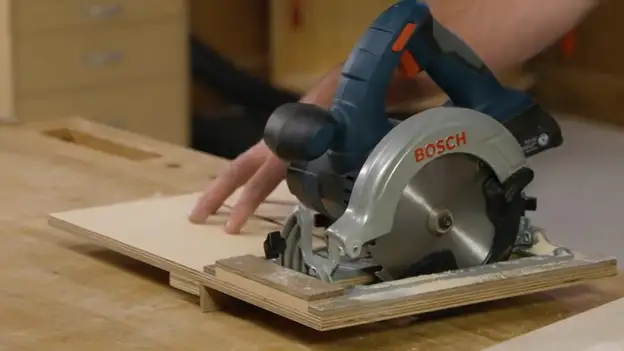
To ensure optimal performance and prevent corrosion, it’s recommended that you lubricate your circular saw before storage. Lubricating the moving parts, such as the gears and bearings, helps maintain their functionality and prevents rust from forming.
Before lubricating, make sure to clean the saw thoroughly to remove any dust or debris. Apply a few drops of lubricant to the key areas, such as the blade arbor, motor bearings, and depth adjustment mechanism. Use a high-quality lubricant that’s specifically designed for power tools.
Spread the lubricant evenly and wipe off any excess. Additionally, if you have rust on your circular saw blades, consider using a rust remover to effectively remove the rust from the circular saw blade and maintain the circular saw blade’s performance and longevity.
Store Your Circular Saw the Right Way for Long-Lasting Use
Storing your circular saw properly is essential to ensure its longevity and performance. Using one of the various methods that I’ve shared, such as a dedicated storage case, hanging it on the wall, utilizing a toolbox or cabinet, or other creative solutions, you can keep your saw clean and protected.
Avoid common storage pitfalls like exposure to moisture, extreme temperatures, or flammable materials. And don’t store your circular saw with the blade attached for safety. With the right storage method and a little care, your circular saw will serve you well for a long time.

